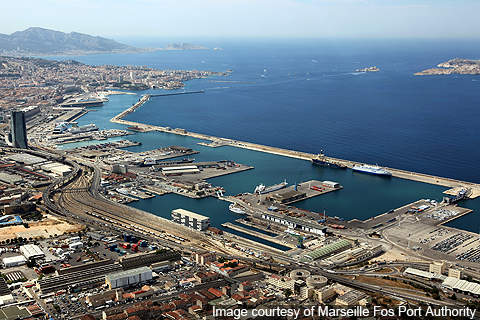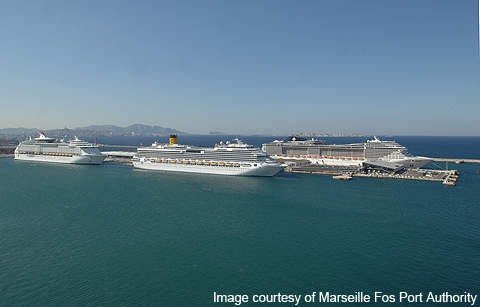France’s Port of Marseille is one of the oldest seaports in the country and its busiest oil port. It handles oil and bulk liquids, and bulk solids such as minerals and grains. Controlled by the Marseilles Fos port authority, the port serves as a trade gateway to European markets. In 2009 it served more than 11,200 ship calls.
The port is made up of east and the west basins. The east basin covers an area of 400ha while the west basin is spread over 10,000ha.
The port’s 980m deepwater quay is served by a river station at a maximum draft of 12.8m and three deepwater stations at a maximum draft of 16.5m.
Facilities
The port has three main harbours: Marseille, Lavera and Fos. Marseille handles passengers, general cargo, roll-on/roll-off activities and ship repairs. Lavera is dedicated to crude oil chemicals and refined oil activities, while Fos is used for crude oil and container-related activities.
The port employs around 1,500 people. Fishing is one of the main commercial activities at the port, which houses a large indoor fish market. Chemicals, building materials, glass, soap, plastics, textiles, olive oil and sugar are also manufactured on the site.
The port transports over 100mt of freight annually. A pipeline is used to transport petroleum from the port to the Paris Basin.
History
Marseille was founded as a trading port in 600BC by the Greeks. A railroad line was constructed from the port to Avignon in 1849 and to Toulon in 1859. During the rule of Napoleon III, the port’s dock and storage areas were extended.
In 1881 the Chamber of Commerce was appointed as the operator of the port’s sheds, docks and equipment. The Chamber of Commerce became the Port of Marseille Authority (PMA) in April 1966.
In 1970, Dry Dock 10, one of the largest in the world, was constructed at the port. A public container terminal was inaugurated by the PMA in 1994.
The port played an important role in governing and maintaining the colonies during the French monarchy. Nazis occupied the port from 1942 to 1944, when it was liberated by Allied armies.
Throughput
The port’s throughput in March 2010 was 7.99 million tons, including 219,000t of conventional and break bulk cargo.
Recent developments
In July 2007 the Marseille Port Board provided €22m to construct a seventh mooring berth at the Fos petroleum terminal. The project is scheduled to be completed by mid-2011. The berth will be used for refined oil products.
In March 2009 Shell and Vopak formed a joint venture, Fos Faster, to construct an LNG terminal at the port. The terminal will have an initial capacity of 8 billion cubic metres per annum (bcma). The terminal can be further expanded to produce 12bcma of gas.
In March 2010 Hutchison Port Holdings acquired the contract for developing Marseille’s Fos 4XL container terminal. The terminal is expected to be operational by 2018.










